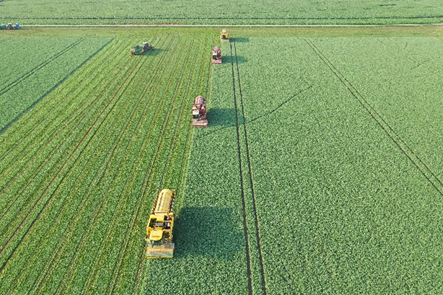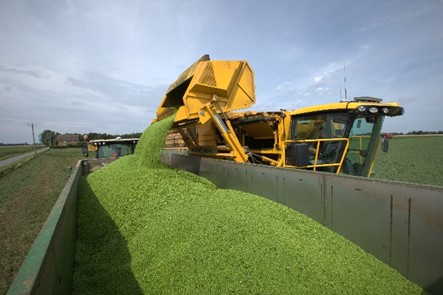Objectives of the service

The project will develop a yield prediction package to allow vining pea growers and processers to forecast intake volumes around two weeks before harvest. This will allow growers to actively manage harvest timings, and factories to manipulate freezer lines in terms of how many lines are running, hygiene and defrost timings. This coordination will improve factory efficiency and ensure that less of the crop is wasted.
This project aims to support vining pea growers to reduce the proportion of bypassed crop. Accurate forecasting of the 24-hour harvest window for each crop and allocation of a yield figure to that window will allow factories and processors to prepare and open lines ready to process larger volumes of peas or close them down when lower volumes are expected.
Users and their needs
There is a small window of typically 1-2 days when the vining pea crop is fit for harvest. Following harvest, the crop must be processed within 2.5 hours for freezing or 4 hours for canning. If the vining pea crop cannot be harvested and processed within this time requirement it is ‘bypassed’ (wasted). Although some bypassed crop may be harvested for livestock or seed (at a significantly reduced value), a significant proportion is unharvested and completely wasted. Vining pea growers work with processors to try and manage a continuous even supply of peas into the processing factories throughout the harvest campaign. However, all vining pea grower groups budget for a proportion of ‘bypassed’ crop.
Accurate yield prediction is the next step to improve harvest efficiency and reduce wastage. This project will work with vining pea growers and processors in the UK to evaluate the feasibility of a yield prediction service.
Service/ system concept
Vining pea growers will provide basic field and crop information including sowing date, variety, field location and estimated full flower date. Satellite information will be sourced for the fields during the growing season. This satellite data will be processed using algorithms developed in the project to provide a yield prediction for each field in approximately 2 weeks before harvest. This information will be shared with the grower and processors. In order to maximise the value of the service, yield forecasts will be produced for all growers within a grower group in order to forecast total intake volumes to the factory 2 weeks in advance of harvest. This information will allow factories and processors to prepare and open lines ready to process larger volumes of peas or close them down when lower volumes are expected.

Space Added Value
The study will examine a range of satellite imagery including Sentinel (10m resolution), PlanetScope (3m resolution), SPOT-7 (1.5m resolution) and Worldview (0.46m resolution) to establish which Vegetation Index data provide the best correlation with yield data. It is likely that the level of correlation will vary with the satellite properties (e.g. bands and image resolution), and therefore the study will explore which satellite source provides the best cost-benefit for predicting yield.
Current Status

A stakeholder engagement workshop has been held to introduce the project and seek feedback from growers and processors. ADAS and HMC are currently processing and analysing historic HMC yield map data.




